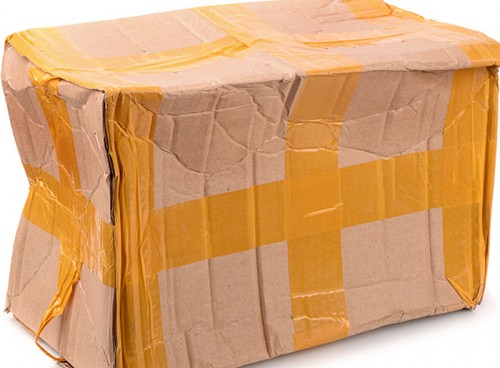Fulfillment quality matters more than many sellers think. When something goes wrong in a transaction (say, an item arrives damaged, or it’s the wrong item, or it’s the wrong size), the way in which you’ve presented yourself in the fulfillment process can mean the difference between a strained or angry interaction with the customer and one in which they give you the benefit of the doubt—and positive feedback in the end.
Want your customers to be delighted with their order? Here are some things that you can do with your fulfillment process to ensure that this is the case:
1. Beat stated shipping and handling times.
There’s nothing customers love more than getting their product sooner than they expected to—even if it’s just by a day. Work hard to stay ahead of your stated handling times and consider offering free shipping upgrades with the cost is negligible. Offer expedited shipping as an option, since it is more and more popular amongst shoppers, then deliver without delay when they opt to use it. The more quickly you get an order into the customer’s hands, the happier they’ll be with you as a seller.
Take every care to ensure that your shoppers never receive a box that looks like this:

2. Upgrade, customize, and care for your cartons and other materials.
Make a good first impression with clean, unblemished, weight-correct boxes and padded envelopes that show few signs of wear and tear. Think twice before trying to “make any box work” and avoid the “modified box” (cut down with utility knives and/or patched back together) whenever you can. Be equally thoughtful about tape and labels, print rather than hand-write, and consider applying a colorful sticker or print showing your brand and website on each parcel. Think about it this way: if your customer’s first impression upon seeing your parcel is, “Ugh, I don’t want to touch that!” you’re already well behind the game. If they see your box with excitement and optimism, you’ve almost guaranteed a win in the end—whatever happens after they get it in the front door.
3. Control your when-first-opened presentation.
For sealed box or bubble pack products this is a relatively easy win, but for many other kinds of products, you can impress your customer by showing that you’ve cared for the product well in your warehouse. Use compressed air or a soft cloth to remove dust and/or debris. Roll cords up and fasten them. Fold textiles nicely and minimize creases and wrinkles. For anything susceptible to being soiled (white products, fabrics, leathers, suedes, “soft” housewares), consider a plastic bag or wrapping in cling wrap before boxing. Avoid adding even more “impenetrable packaging” that requires sharp scissors and surgical skills to open. Use the right amount of tape and the right amount packaging and ensure that they are clean and undamaged when applied.
4. Treat package damage as a form of product damage.
Nothing is more deflating than opening the shipping carton to find a product with damaged, dented, soiled, or torn packaging. This leaves shoppers wondering whether the item inside is intact and just what must have happened to their purchase before it reached them. Avoid the temptation to blithely ship products in damaged packaging to customers with the rationalization that “the item inside the box is probably fine.” If an inventory item has suffered packaging damage, set it aside and put the next, pristine one in the box. Shunt package-damaged items off into their own listings with small discounts, in which you mention that there is “minor damage to packaging that does not affect product quality.” It’s a twofer: one customer happy to receive their item in pristine packaging, a second customer happy to have found a good deal simply as the result of box damage.
5. Avoid doing your own damage.
Some sellers assume that the needs of their own logistics and shipping process outweigh the shopper’s experience. Anyone that has shopped a lot online—particularly on eBay—has met the seller that applies inventory stickers or tape directly to products or product boxes—the kind that leaves behind sticky residue, that tears when removed, or worse, that tears product packaging or damages an actual product. Many have also opened a shipping carton to find that the seller has folded or trimmed a purchase in ways that result in permanent damage to packaging or product, simply to “fit” the purchase into a carton. These are bad mistakes—particularly for new-condition goods. Don’t damage your own products or their packaging as you get them out the door. Use right-sized boxes and packaging, and be careful about adhesive materials and markings.
6. Include a packing slip and return or exchange instructions.
Two things that few sellers offer any longer, but that shoppers continue to value, are a receipt or transaction summary and return instructions. Print your eBay sales summary or other packing slip and include it in the parcel. If possible, also provide succinct return instructions in another sheet, whether these include using an automated process like eBay-managed returns or your own in-house returns process. Be sure to clarify any restocking fees, how refunds or exchanges will be provided, and in what time frames. Include contact information at the same time. Including a packing slip and returns sheet significantly enhances your professionalism, and makes life much easier (whether at tax time or for returns and exchanges) for your customers.
Even a simple “Thank You” card can impress shoppers and leave a lasting positive impression.

7. Provide a value-add.
Including something beyond the bare product is one of the best ways to delight buyers. Some eBay sellers build a great deal of goodwill simply by including a printed 2″x3″ card that reads “Thank you for your order! Let us know if you need assistance!”, followed by a signature, in each parcel—something that’s easy and incredibly inexpensive to produce and print. A free postcard from your locale, a couple of peppermints, an inexpensive accessory, a microfiber cleaning cloth—almost anything “extra” can make a shopper smile.
8. Use a fulfillment partner.
Amazon’s FBA has to be seen as the prohibitive favorite amongst most independent sellers, but there are others to choose from—most mid-sized and larger locales are home to one or more companies that specialize in warehousing, logistics, and fulfillment. Expect a small learning curve, but in the end, the consistent quality level offered by a fulfillment partner and the time and cost savings involved can add up. As your volume ramps up, know when you’ve come to the fork in the road—because there almost always is one—at which you have to choose either to professionalize, streamline, and automate your in-house fulfillment process significantly or, on the other hand, to outsource your fulfillment entirely to specialized professionals.
While the items above may seem secondary to the actual product and the fact of its arrival in sellers’ minds, sellers that ignore them create a lot of headaches for themselves down the road. In e-commerce, transaction problems are inevitable. If the rest of the experience has been flawless for a shopper, the final outcome of any problem transaction tends to be far happier for all involved.
Find a Home-Based Business to Start-Up >>> Hundreds of Business Listings.
















































